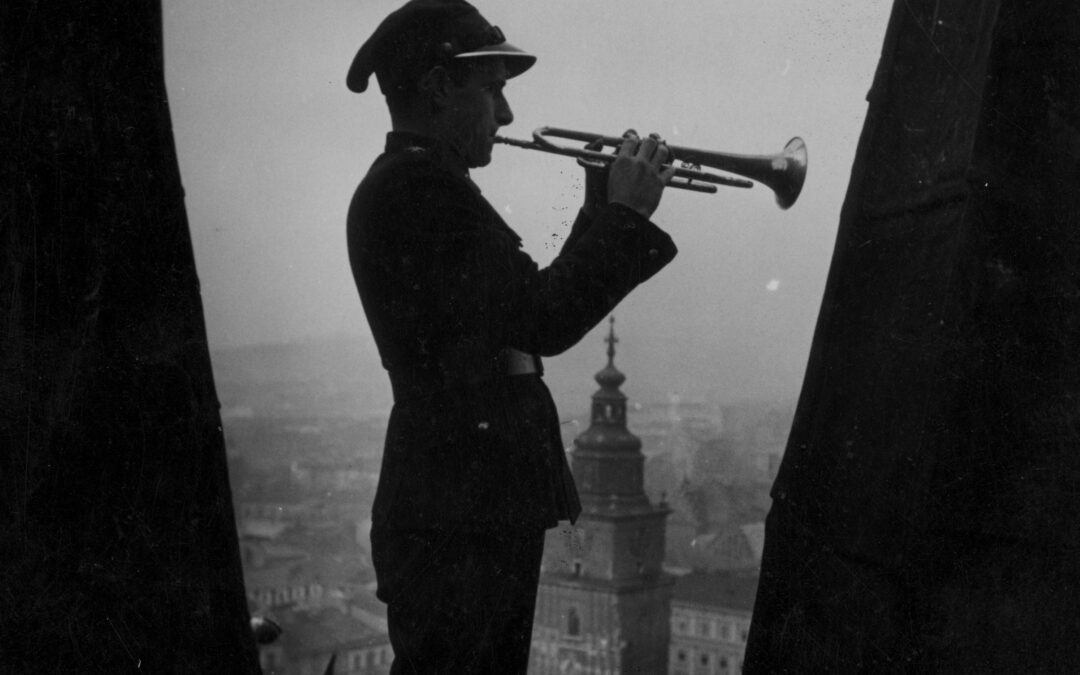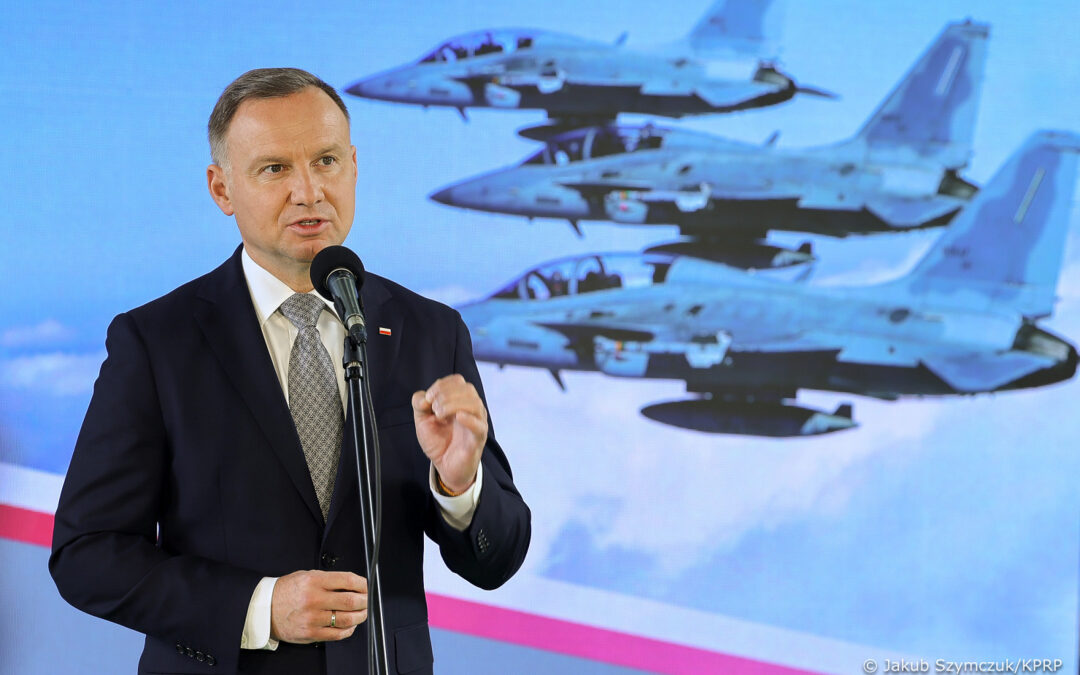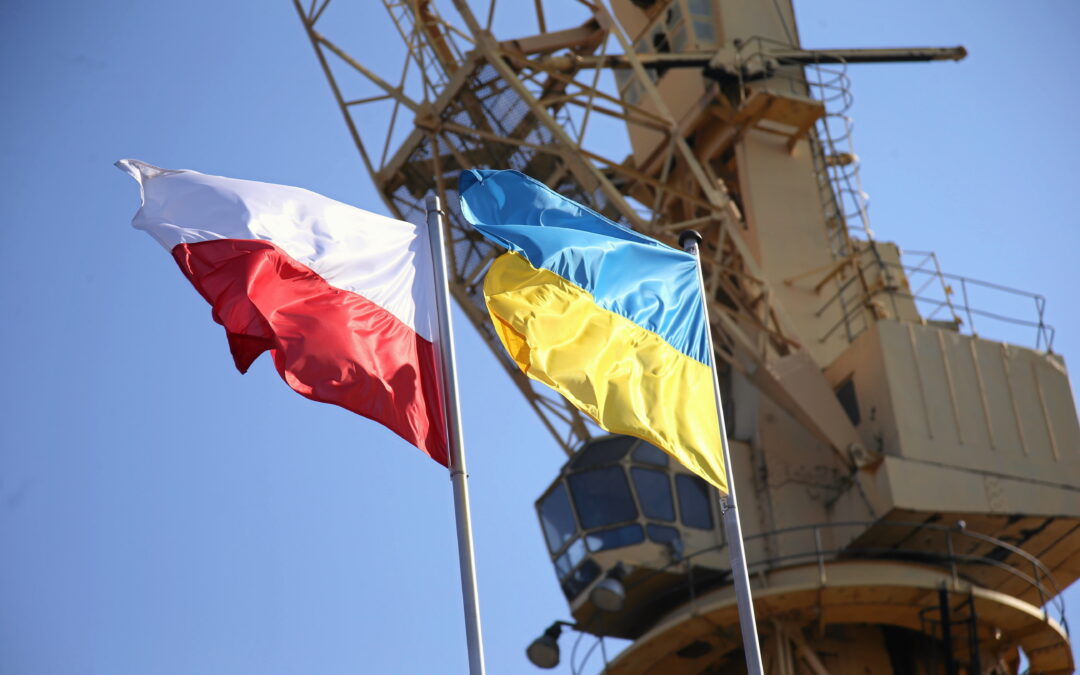Kraków is looking for a new bugler to play the famous hourly call from St Mary’s Basilica on the city’s medieval market square, following the retirement of one of its longest-serving current buglers.
The trumpet call, known in Polish as the hejnał mariacki, is one of Kraków’s most famous traditions. It is played – on the hour, every hour – from the window on each of the four sides of the taller of the church’s two towers.
The tradition dates back to at least the 14th century. According to more recent mythology, it was inspired by a heroic bugler who warned of invading forces but was killed by an arrow mid-tune – hence why today’s call also ends abruptly.
#Krakow Hejnał Mariacki na dobranoc. Zazwyczaj słuchany przez tłumy, teraz rozbrzmiewa nad pustym Rynkiem Głównym.
Jeśli za nim tęsknicie polecamy live z Wieży Mariackiej, codziennie o godzinie 12:00 https://t.co/FcECd7WPaa pic.twitter.com/qf2Lja9uFX
— Kraków (@krakow_pl) April 9, 2020
The new position has opened up after one of the existing buglers, Jan Sergiel, decided to hang up his trumpet following 24 years of service, reports Polsat.
His replacement is required to be a Polish citizen educated to at least least secondary level and must not have a criminal record. The successful candidate will have to pass trumpet-playing and fitness tests.
They must also not be afraid of heights: buglers have to climb 272 steps to reach the small room in which the trumpet call is played, 81 metres above the ground.
The new bugler will join a band of seven entrusted with playing the hejnał mariacki. Working in pairs, they are on duty for nearly 24 hours from 8 a.m. to 7 a.m. the next day, after which they take a 48-hour break
#Krakow #HejnałMariacki #hejnał #wywiad Praca z jednym z najlepszych widoków z okna w Krakowie, ale "biuro" na piętrze w budynku bez windy. 😁
Zapraszamy do przeczytania, co o swojej służbie mówi Jan Sergiel, krakowski hejnalista.🎺
=> https://t.co/zWhGb7QOOD@krakow_pl pic.twitter.com/1iefgjoYiq— Kraków (@krakow_pl) January 20, 2020
“Recruitment is open to all who can meet the conditions,” said the press office of Bartłomiej Rosiek, the municipal commander of the State Fire Service (PSP), which is today responsible for maintaining the hejnał mariackitradition.
The bugle-callers do not take part in other firefighting services, although they were called upon in 2016 to help ensure the safety of pilgrims during the Catholic church’s World Youth Day, which was hosted in Kraków that year.
The new bugler will, however, have other responsibilities than just the trumpet call. These include playing religious and historical songs, accompanying visitors to the tower, and giving interviews about the history of the tower and the hejnał mariacki.
According to a legend that likely arose only in the 20th century, the hejnał mariacki originated with a bugler who played the call in 1241 to warn of invading Mongol forces. In response, the Mongol army shot a flurry of arrows at the tower, killing the bugler and breaking off the call midway through.
In reality, though, it is not know for certain exactly when and why the trumpet call – which was first documented in 1392 – began in Kraków. Historically, the call was used to warn Kraków residents about fires or invasions, as well as marking the opening and closing of the city gates, reports Polsat. Only much more recently did it become an hourly tradition.
The hejnał is directed first in the direction of Wawel Royal Castle, to symbolise playing for the king; then towards the market square, for city councillors; then to the Florian Gate, for guests; and finally in the direction of the fire department headquarters.
Since 1927, the noon performance has been broadcast across Poland on public radio. It has also been used as a national symbol, and was played in 1944 in the monastery ruins at Monte Cassino in Italy to announce the Allied victory at the battle there, a key breakthrough in which Polish units played a central part.

The hejnał mariacki being played in Kraków in 1941, left, and at Monte Cassino in 1944, right (Narodowe Archiwum Cyfrowe and Wikimedia Commons, public domain)

Juliette Bretan is a freelance journalist covering Polish and Eastern European current affairs and culture. Her work has featured on the BBC World Service, and in CityMetric, The Independent, Ozy, New Eastern Europe and Culture.pl.



















